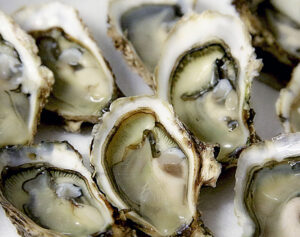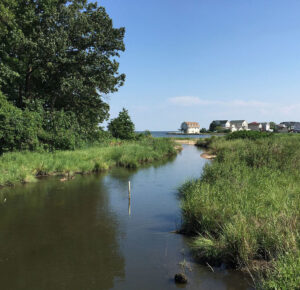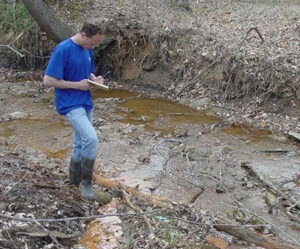The Maryland Department of the Environment (MDE) protects and restores the environment for the health and well-being of all Marylanders. During the current pandemic, it is finding creative ways to manage workforce, regulatory, enforcement, and customer service challenges. In this interview, Ben Grumbles, the secretary of the MDE, and Lee Currey, the director of the MDE’s Water and Science Administration, tell Municipal Water Leader about adjustments the state agency is making, the lessons they are learning, and the advice they are sharing with other agencies around the country.
Municipal Water Leader: Please tell us about your backgrounds and how you came to be in your current positions.
Ben Grumbles: Governor Larry Hogan appointed me to his cabinet in 2015 to serve as environment secretary, which also means chairing his Chesapeake Bay cabinet and the state’s climate change commission. It’s a blast, and it allows me every day to tap into my previous experiences in Arizona, the U.S. Environmental Protection Agency (EPA), the U.S. Water Alliance, and congressional committees.
Lee Currey: I have the good fortune to direct the Water and Science Administration at the MDE, which includes Chesapeake Bay restoration, Safe Drinking Water Act (SDWA) implementation, Clean Water Act (CWA) implementation, dam safety inspection and permitting, protections for shellfish-harvesting areas, and water quality monitoring. I’m a registered professional engineer with more than 25 years in the water resources and engineering field, about 20 of which were in public service; prior to that, I worked in the private sector, focusing on coastal engineering and storm water management.
Municipal Water Leader: Would you give us an overview of the MDE and its services?

Ben Grumbles: The MDE is an environmental and public health agency with about 900 employees. Our regulatory responsibilities include clean air and radiation; clean and safe water; and lands and materials, including waste sites, oil spills, and hazardous materials. We work closely with the Maryland Departments of Agriculture, Health, Natural Resources, and Transportation. In addition to regulation, we’re a funding and financing agency. We have major infrastructure programs, particularly for water and wastewater. We are also a planning and coordination agency. We’re the state lead on climate change and on multistate and federal coordination for the Chesapeake Bay.
Lee Currey: The Water and Science Administration oversees CWA and SDWA activity, so we ensure the restoration and protection of our water resources. Through our SDWA programs, we make sure we have clean and safe drinking water through inspections and monitoring; we also oversee water appropriation permits to make sure that long-term water supplies are sustainable and to ensure source water protection. Through our CWA programs, we issue National Pollutant Discharge Elimination System (NPDES) permits for wastewater plants and industrial utilities. Our municipal separate storm sewer system program covers a large portion of our state, which is highly urbanized. We also have a dam-safety program and are responsible for inspecting and evaluating around 600 dams throughout the state of Maryland, almost half of which are significant- or high-hazard dams. We also issue dam safety permits. We oversee storm water management requirements throughout the state and set standards on best practices in environmental site design. We protect tidal and nontidal wetlands and waterways. Maryland is also unique in issuing waterway construction permits, which are required of any construction that occurs within a stream or a floodplain. We are responsible for ensuring that all our shellfish-harvesting areas have water of an adequate quality to ensure that the oysters that come out of the Chesapeake Bay are safe to eat.
Municipal Water Leader: How has the coronavirus pandemic affected your operations?
Ben Grumbles: Significantly, but we’re still getting the job done and advancing the mission. It has also highlighted for all, both locally and nationally, how essential the water and wastewater sector is to everything. The first operational challenge came in early March, when the governor saw the wave of infections and deaths that was about to happen and mandated all state agencies to telework as much as possible. Weeks later, he issued stay-at-home orders that affected all Marylanders and their daily rituals in fundamental ways. Worker safety and community health have always been priorities for the MDE, but they became our highest priorities with the onset of the pandemic and have continued to be throughout May. Just like every other state and the EPA, we recognize that when there are severe risks to workers and you’re trying to reduce the spread of a pandemic, you have to be flexible and exercise responsible enforcement discretion in certain types of required monitoring and reporting. The EPA issued a national memo on that topic on March 26, and we’ve been working to try to find the right balance for our state in every particular case.

Lee Currey: In this emergency, unlike those in the past, we have moved more than 90 percent of our employees to remote work, while continuing to maintain emergency response capacity and to carry out all mission-critical functions. We are reevaluating processes and procedures so that we can continue mission-critical operations with appropriate public health protections. The questions we now face include which activities cannot be done remotely, which activities can be paused and for how long, and how we restart those activities while safeguarding employees. The question of reentry is one we continue to grapple with today.
Our response to this pandemic emphasizes that our water and wastewater treatment plant operators are part of our critical workforce. As always, we need to ensure worker safety and to ensure that our workers have adequate supplies of personal protective equipment (PPE) on hand. We also must ensure redundancy in water system operation and inspection. For example, we sent out a survey to about 8,000 operators in Maryland, including about 3,000 water treatment plant operators, asking whether they would be willing to work on multiple systems and whether they are currently operating under a circuit rider that would give them the flexibility to work on other systems.
One thing that remains constant is that we need to continue to ensure sure that drinking water is clean and safe and that environmental protections are in place. We are proud that the testing of drinking water continues throughout Maryland during the pandemic. We have also recognized that in some cases, flexibility is needed in the selection of monitoring locations. Given the safeguards in place to protect people in their homes, we have allowed alternative sampling locations. That works well for large systems but can be more of a challenge for smaller systems. We also worked with the laboratories that aid us with mission-critical activities to make sure that they were still open and to identify any concerns. We have been able to quickly move our programs into the digital environment and to do more virtual inspections where we believe it is possible.
Municipal Water Leader: What advice do you have for other water agencies?
Lee Currey: Share ideas and challenges through multistate partnerships. We’ve been fortunate enough to participate in weekly multistate coordination calls for CWA and SDWA program activities. Sharing ideas with our neighbors about what’s working has proven to be important; it leads to faster and better solutions. The work environment under a pandemic is new for all of us, and collaboration leads to more robust approaches.
Evaluate mission-critical and essential work flows to determine PPE needs, social distancing opportunities, and the possibility of using remote technologies. Recognize the need for flexibility, creativity, and innovation for inspections, sampling, and other essential activities. Move quickly to a digital workflow, including the use of digital signatures and the use of e-mail instead of paper and telephone communication. The information technology (IT) component cannot be emphasized enough. I give a lot of credit to our IT team for pulling that together and quickly deploying more mobile devices.
Communicate regularly with the regulated utilities to understand challenges. We coordinated with our water utilities early and continued to do so often. We released several press statements recognizing that in these unusual circumstances, flexibility and creativity are essential for complying with our requirements.
Think about the reopening plan early. With nonessential businesses in Maryland closed, we knew we needed to develop a process to remind building owners that systems need to be flushed.
Municipal Water Leader: How is the MDE coordinating with other states?
Ben Grumbles: We depend on many multistate, regional, and national collaborations to achieve better results for public health, the environment, and the economy than we could by acting alone. For example, the Chesapeake Bay Program, which includes six states, the District of Columbia, and the federal government; the 46‑state Environmental Council of the States; the Association of Clean Water Administrators (ACWA); and the Association of State Drinking Water Administrators (ASDWA) help member states, whether upstream or downwind, develop and share better policies and practices and increase the value of their limited resources. The MDE benefits greatly when its employees can get together with our partners, whether in person or, as is now almost exclusively the case, through virtual meetings and videoconferences. One of the most common themes being discussed by the nation’s environmental officials is that the coronavirus crisis is a wake-up call to accelerate the electronic processing of applications and permits and the implementation of virtual meetings and partial video inspections. This crisis is showing that the future is teleworking, going paperless and digital, and modernizing the business of environmental protection in bold ways.

Lee Currey: Collaboration with other state colleagues leads to more robust ideas and solutions. Professional organizations such as ACWA and the ASDWA play a critical role in sharing challenges, experiences, and concerns across the nation. Since most of us are now comfortable with virtual meetings, we can quickly schedule a multistate or multiagency meeting to discuss and get feedback on a certain issue.
Municipal Water Leader: What were some of the unexpected challenges related to this pandemic?
Lee Currey: The shortage of PPE; the fact that the shortage of toilet paper led to the use of other materials that had the potential to clog infrastructure; and the challenges of holding public meetings and conducting licensing exams.
Municipal Water Leader: What have you learned through this experience that will be useful in future crisis situations?
Ben Grumbles: Some of the big trends that this crisis will push forward are digital permitting, remote sensing, and virtual inspection, as well as teleworking and reliance on technology in our daily work. This is a real learning experience when it comes to continuity of operations. We’ve learned more about how to maintain contact with the Maryland Emergency Management Agency and with local officials to ensure that useful public service announcements are made frequently to improve customer service and increase transparency.
Lee Currey: One major advancement is the use of technology for continuity of operations, collaboration, communication, and inspections. Now that we have gone through a real test case that forced more remote and virtual tools into our daily workflow, we have a greater understanding of how to use them. This crisis has emphasized again how essential water and wastewater systems and their operators, supply chains, and energy providers are. One of the most fundamental hygiene recommendations amid the pandemic is to frequently wash your hands, which points to the importance of these systems and the employees who operate them.
Ben Grumbles is the secretary of the environment for the State of Maryland. He can be contacted at ben.grumbles@maryland.gov.
Lee Currey is the director of the Water and Science Administration. He can be contacted at lee.currey@maryland.gov. For more about the Maryland Department of the Environment, visit mde.maryland.gov.
